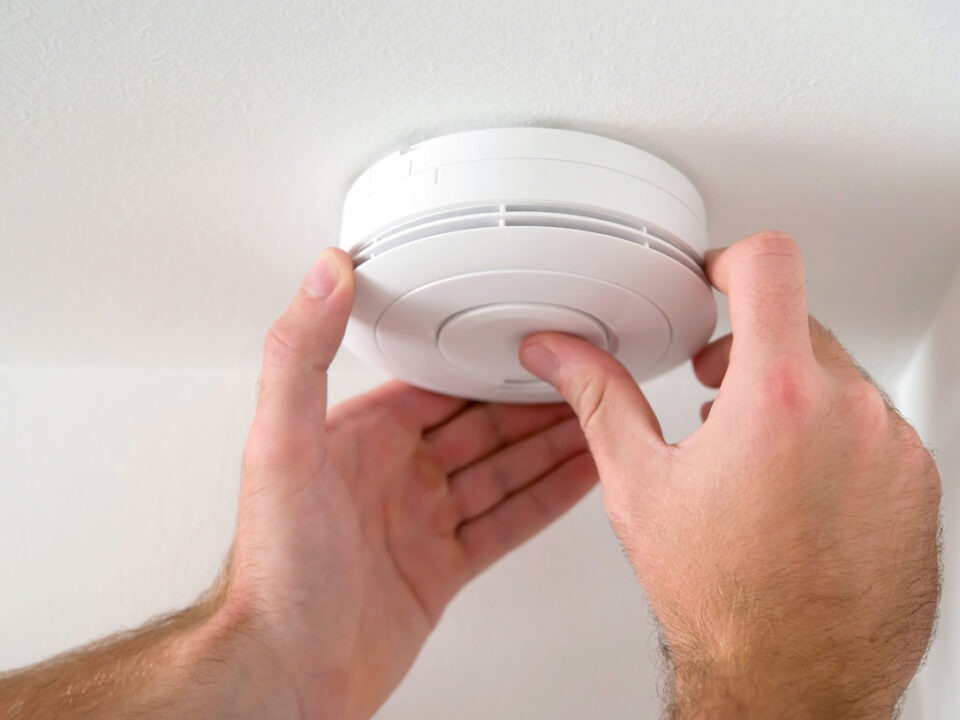Why Is My Fire Alarm Beeping?

Many Commercial fire alarm firms recommend that smoke detectors be installed in each bedroom and on every property level. To avoid false alarms, it’s better to mount them on the ceiling or high on the wall. According to the fire alarm firms, three out of every five fire deaths happen since a home’s smoke detectors are either not installed or are inoperable. If your smoke detector is blaring and not operating properly, it’s critical to figure out what’s wrong and fix it as soon as possible to keep yourself and your family safe.
Why is Fire Alarm Randomly Beeping?
When the batteries in most smoke alarms run out, they will chirp regularly to alert you. There could be reasons why your fire alarms are beeping at irregular intervals: The battery could be loose or fitted incorrectly; make sure the battery fits snugly in the battery slot. A chirp could signal a low battery or another battery-related issue every minute. Other causes of erratic beeping include batteries pointing in the wrong direction, battery pull-tabs that are already in position, or a partly open battery drawer. It suggests that you examine the batteries to determine which direction they’re placed and that they’re in the right place to resolve this problem. To silence the chirping, change the dead batteries with new ones. Smoke detector batteries should be replaced every two years on average. When you adjust your clocks for daylight savings time, you should check your batteries to make it easier to recall when to update or check them.
What to Do If Fire Alarm Is Beeping
When a smoke detector’s battery needs to be replaced, it’s supposed to emit a chirping sound. Many faults are retained in the processor of newer smoke alarms. The smoke alarm should clear any faults after changing the batteries, although it may continue to beep. This is most common in smoke alarms with a battery backup powered by electricity. The only way to silence the chirping is to manually clear the error from the processor by resetting the smoke alarm.
How to Turn Off Fire Alarm Beeping?
Your smoke alarm may emit a beeping sound, but the muffs, rising noise that emanates from a smoke alarm is the alarm. However, there are various factors that might cause false alarms, there may be a true fire when the alarm sounds. It’s most certainly a battery issue when a smoke detector beeps, and once you’ve remedied the problem, the buzzing should stop. If it doesn’t, you can use a specific approach to call it to a halt. Smoke detectors typically beep due to weak batteries. Hardwired and stand-alone smoke alarms both need batteries and will beep once per minute if the batteries are low. This buzzing can be irritating, but unless the batteries are insulated, as is needed in certain other jurisdictions, you can typically silence it by changing them. In that situation, the chirping indicates that the smoke detector should be replaced. It’s possible that the smoke detector battery isn’t the source of the chirping. It’s possible that there’s a loose connection in the battery compartment or that the compartment door is open. If the machine is hardwired, the chirping could signal a tripped circuit breaker or a power outage. The chirping should stop once you’ve found and fixed the problem. If it doesn’t, the memory must be reset.
How Do You Take The Battery Out of Fire Alarm?
To protect your home and family, it’s vital to keep your smoke detector charged with fresh batteries. Removing the battery out of a smoke alarm, also referred to as a smoke detector, will not result in the device turning on and beeping. Instead, it will most probably turn off the gadget. As a result, detaching the battery serves only one aim: to replace it. Power Sources for Smoke Detectors. There are two ways that smoke alarms obtain power. Some are fuelled by a 9-volt or a 10-year lithium battery. None of these machines has the power to turn off without the battery. Other smoke detectors are hardwired, which means they connect to the home’s or building’s electrical system and take power from it. If the electrical power goes out, hardwired alarms often feature a battery backup. If you remove the battery from one of these units and lose power, the alarm will not ring, and you will not be warned of the danger.
How to Reset a Fire Alarm to Stop Chirping after Installing a New Battery?
To cut off the electrical power flowing to the smoke alarm, switch off the primary breaker in your home’s breaker box. Remove the smoke alarm from its overhead mounting bracket and unplug the fire detector’s power cable. Remove the device, then click and hold the “Test” button for 15 seconds. An alarm will ring for a short time before going silent. Replace the smoke detector’s battery, reconnect the power line, and reinstall the smoke detector on its mounting bracket. The breaker should be turned on. The smoke alarm will chirp once to signify that power has been restored to the unit.
- Take the smoke detector’s battery out.
- For 15 seconds, click and hold the “Test” button. An alarm will sound for a short time before turning off.
- Replacing the smoke detector’s battery is easy. When the battery is fully charged, the smoke alarm will chirp once.
A smoke alarm is required to keep you and your family safe in the event of a home fire. Ensure your property has a sufficient number of smoke alarms fitted, as this is an essential form of protection. Your home’s size will determine this. A qualified electrician will assist you in appropriately installing the smoke alarms and ensuring that they do not chirp needlessly. A properly fitted and functioning smoke alarm can save lives and property by warning you about the possibility of a fire.


